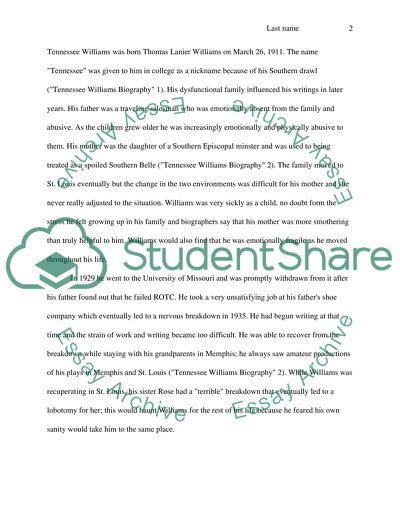Cite this document
(“Tennessee Williams: Symbolism in Streetcar Named Desire and Cat On a Essay”, n.d.)
Tennessee Williams: Symbolism in Streetcar Named Desire and Cat On a Essay. Retrieved from https://studentshare.org/literature/1554481-tennessee-williams-symbolism-in-cat-on-a-hot-tin-roof-and-streetcar-named-desire
Tennessee Williams: Symbolism in Streetcar Named Desire and Cat On a Essay. Retrieved from https://studentshare.org/literature/1554481-tennessee-williams-symbolism-in-cat-on-a-hot-tin-roof-and-streetcar-named-desire
(Tennessee Williams: Symbolism in Streetcar Named Desire and Cat On a Essay)
Tennessee Williams: Symbolism in Streetcar Named Desire and Cat On a Essay. https://studentshare.org/literature/1554481-tennessee-williams-symbolism-in-cat-on-a-hot-tin-roof-and-streetcar-named-desire.
Tennessee Williams: Symbolism in Streetcar Named Desire and Cat On a Essay. https://studentshare.org/literature/1554481-tennessee-williams-symbolism-in-cat-on-a-hot-tin-roof-and-streetcar-named-desire.
“Tennessee Williams: Symbolism in Streetcar Named Desire and Cat On a Essay”, n.d. https://studentshare.org/literature/1554481-tennessee-williams-symbolism-in-cat-on-a-hot-tin-roof-and-streetcar-named-desire.


